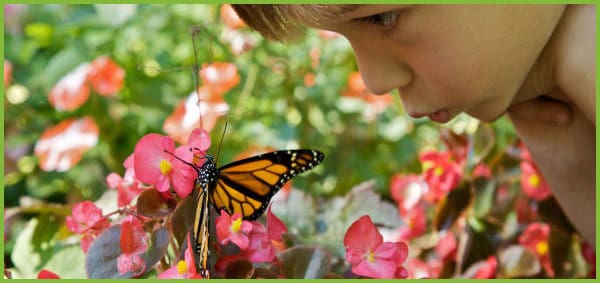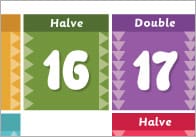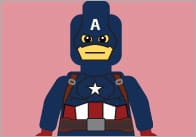Outdoor Play Activities and Ideas (Part 1)
Ok here are a few outdoor play ideas that I’ve picked up from various sources. Some were given to me by visitors to the site, some I picked up from around the internet (credit given) and some I thought up all by myself.
– Mark Making ideas
Needless to say the outdoors presents a huge amount of opportunities for mark-making. So many in fact that I decided to include them in a separate blog post: Mark making ideas, resources and activities.
– Treasure hunts
Make a trail of arrow signs on the ground for children to follow (space them out so that they have to put a bit of effort in to finding them). At the end of the trail put some treasure. You could extend this idea by giving them clues to follow or by giving them a specific target – e.g. find 1 bear, 5 pine cones, 6 conkers etc.
You could play about with this format and develop it in to a mystery which involves listening to a story and solving clues. Try and draw on the particular interests of the children in your setting. For example you could invent a story where….
This could then lead in to an activity….
– Minibeast hunt
Metre of earth hunt. This idea is taken from Somerset Outdoor Play “This is especially good to do in a wood or forest. Find some sticks and mark out an area on the ground about a metre square – one square for each person. Now get down close to the ground by the square and see how many interesting things you can find – leaf skeletons, mini creatures, flowers, cones, nuts.”
Use some Jumbo magnifying glasses or an ‘Anywhere Microscope’ to help.
Another variation of this would be to encourage the children to find as many minibeasts and other natural objects as possible in the garden and photograph them. You could use a Minibeast sweeper or a Minibeast vacuum to help gather the minibeasts without hurting them. Then using a wireless hand-held digital microscope take a magnified picture of each minibeast / object and print both images out to create a series of picture cards which can be used in some sort of matching game.
The ELHQ free insect spotter sheet and minibeast trump cards might also be of use. If they manage to catch a caterpillar you could put him in a big jar with air holes so that the children can witness its metamorphosis in to a butterfly. Remember to put some of the plants nearby to where it was discovered in to the jar as well. This is important as caterpillars are very fussy eaters. Also, remember to keep his food supply topped up.
– Make a leaf boat
Another idea taken from Somerset Outdoor Play “Find one or two large strong leaves and lay them one on top of the other to make the boat part. Now find a straight thin twig and one good leaf. Poke the twig through near the bottom of the leaf and then near the top of the leaf – this becomes the sail. Make a hole through the leaf boat and push the end of the sail into it.”
– Make and fly kites
Making some simple kites can be a lot of fun. In early years settings these kites need to be quite simple to fly so you could start with a stretched wire coat hanger and wrap some polyester over it. Get the children to decorate it in whatever way they want and then add a couple of pieces of straw across it and attach some string and some strips of crepe or ribbon.
An even simpler technique would be to use plastic carrier bags with string attached. This is a very fast and effective way of demonstrating aerodynamics and can be a lot of fun on a windy day. You could develop this idea and create a slightly more complex plastic bag kite using this template: How to build a plastic bag kite.
– Target Games
Create a target board with the children. It can take any shape or form that they want and divide it up in to section with different numbers. Ask the children to pick out their favourite toys from the nursery / school or select a collection yourself. Lay the toys on the floor or a table next to number cards that correspond to the numbers on the board. You could put a collection of toys next to number one, another collection next to number 2 etc. The children must then stand on a marker (set at a distance away from the board) and throw a ball or bean bag at the target. When they hit a number on the target board they will be able to choose a toy from the collection that matches that number.
This game could be made more difficult by introducing coins and money. Instead of just numbers the target board could refer to monetary values – 1p, 2p, 3p etc. They would be rewarded with coins which they could then swap for toys which would have a particular monetary value. It could be done simply by using 1ps or you could make things even more challenging by introducing 5ps, 10ps 20ps etc. If a child hits 17p on the target board he would have to work out the correct combination of coins from the pot of money. You could add another option to the game by making 6 markers on the floor, labelled 1 – 6. Each marker would be set at a different distance away from the board – number 6 being the closest. Before throwing the ball or bean bag the contestant would first have to roll a dice to determine where he/she stands.
Another variation of the game would be to use rubber hoops and cones or you could fill numbered bottles up with different amounts of sand, water, gravel etc and get the children to try and knock them over with a ball or bean bag.
Taken from a previous blog post about Early Years Numeracy.
With all target games it’s important to have opportunities to record tally marks e.g. a blackboard/ whiteboard next to a netball net (self-adhesive chalkboard foil might be quite useful in this respect) or some clipboards with pens attached.
– Collect leaves and seeds
Encourage children to collect as many different types of leaves as possible and stick them in a scrapbook (the scrapbook should be left under a pile of books for about a month to help preserve the leaves) .
The leaves can also be used for rubbing, drawing and mark making exercises.
You can view part 2 of this article here.
Popular Teaching Resources
Stay Up To Date
Sign up for our newsletter and we’ll let you know when we create new early years resources.






